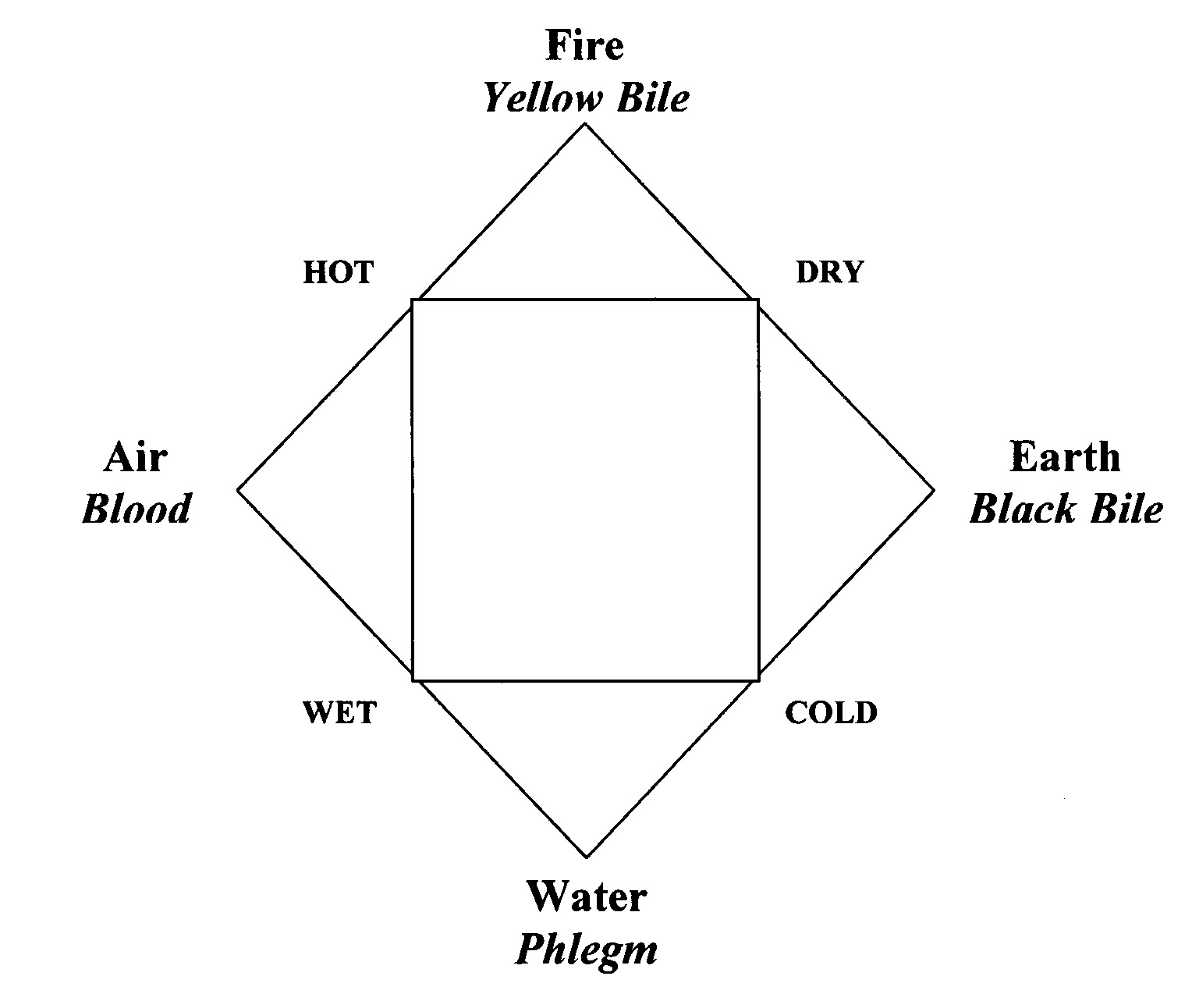.jpg)
|
Zodiac
Man
The assumption underlying Galenic medicine, like the Aristotelian/Ptolemaic
universe, was anthropocentric: according to this system of human physiology,
the “microcosm” of the human body corresponded with the “macrocosm”
of the universe, the planets and stars and their motions. For this reason,
astrology could assist in the diagnosis and remedy of disease. The woodcut
at the left shows which constellation, symbolized by a sign of the zodiac,
governed which region of the body. Aries governs the head as well as the
month of March, and so on. The table advises that a region of the body
should not receive medication when the corresponding sign is dominant.
So, it is ill-advised to treat the head in March, and “anyone who
does so will cause a concussion or die.” Similarly the legend
for Cancer says: “The Crab is the sign of June: avoid treating the
stomach, the spleen, the lungs or the eyes.”
|
|
.jpg) |
A
Diagnostic Uroscopy Chart
Just as the physical world was governed by the “natural” and
“violent” motions of the elements, so health was determined
by the relationship between the four humors and their motions within the
body. An excess of any one humor resulted in dyscrasia,
an abnormal mixture. Thus an excess of black bile produced melancholia, and so on. Medical diagnosis
aimed, therefore, to discover the nature of that imbalance and what had
caused it; medical cures were meant to restore equilibrium between the
four humors.
Galen also believed that a disease-causing imbalance could be located
within an organ or region within the human body, which enabled him to
device cures that targeted particular organs. Because health and disease
were thought of in terms of equilibrium and disequilibrium, Galen's cures
treated disease with contraries, that is, they aimed to correct imablance
by adding to or removing humors. The use of opposites to treat diseases
was accomplished though the use of pharmacological agents or other “balancing”
procedures, such as bloodletting or purging.
The diagram at the right illustrates how fifteenth- and sixteenth-century
Galenic physicians used this understanding of health and disease to diagnose
bodily ailments. It is a uroscopy chart and is intended to help physicians
determine the balance of humors by measuring the color, contents, and
consistency of urine. In this chart, the focus is on the color of urine.
The wheel shows twenty-one flasks, each containing urine of a particular
color, each of which corresponds to a specific relationship among the
four humors. Equipped with a color wheel such as this, a physician could
quickly determine whether the patient was suffering from an excess of
choler (yellow bile), blood, phlegm, etc., and then take the appropriate
corrective measure. The image comes from Johannes de Ketham, Fasiculo
de medicina (Venice: Zuane & Gregorio di Gregorii, 1494), one
of the earliest published Galenic handbooks of diagnostic medicine and
the first to include anatomical illustrations.
Image source: National
Institutes of Health. |
|

.jpg)
.jpg)